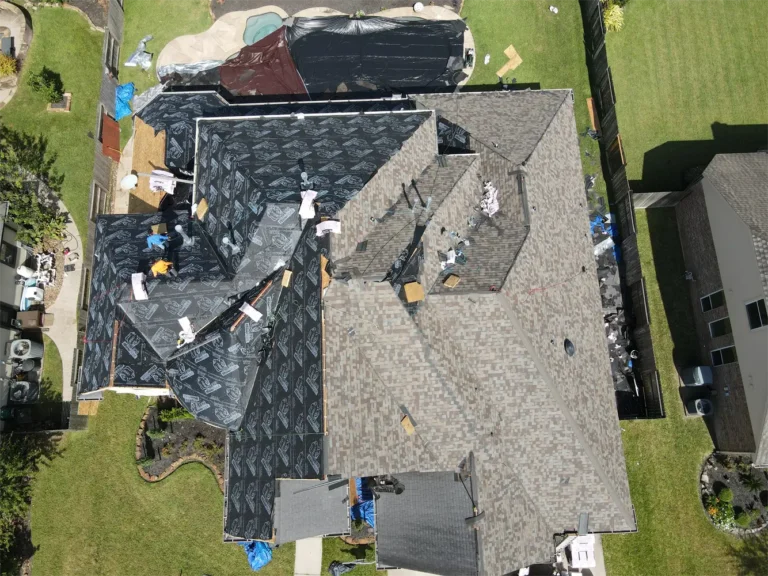- Home
- Roof Slope Types
Roof Slope Types for Optimal Roofing Performance
At 12 Stones Roofing & Construction, we know that the angle, or slope, of your roof plays a critical role in determining the right materials, drainage, ventilation, and long-term performance of your roofing system. Whether you’re building a new home, retrofitting a commercial structure, or planning a complete roof replacement, understanding the types of roof slopes is key to making the right decisions. As a leading Pasadena roofing contractor, we’re here to guide you through it.

What Is Roof Slope?
Roof slope (also called pitch) refers to the steepness or angle of your roof. It’s usually expressed as a ratio of vertical rise to horizontal run, such as 4:12, meaning the roof rises 4 inches for every 12 inches of horizontal distance. The slope impacts not just how your roof looks but how it performs in rain, wind, and extreme temperatures.
Key reasons the roof slope matters:
- Water Drainage: Steeper slopes allow water to shed faster, reducing the risk of pooling and leaks.
- Material Suitability: Certain materials perform better on specific slopes. For instance, asphalt shingles excel on steeper slopes, while TPO or EPDM membranes are ideal for flat roofs.
- Wind Resistance: Lower-pitched roofs typically handle high winds better, whereas steep-sloped roofs are more aerodynamic.
- Aesthetic Appeal: Roof pitch also contributes to the overall architecture and style of your home or building.
Common Types of Roof Slopes
Here are the most widely used roof slopes across residential and commercial structures in Texas:
1. Flat Roof (0:12 to 2:12)
- Description: Minimal to no slope.
- Best For: Commercial buildings, modern residential styles.
- Materials Used: TPO, EPDM, PVC, Modified Bitumen.
- Considerations: Requires expert drainage design. Despite the name, flat roofs still require a slight slope for proper runoff.
2. Low Slope (2:12 to 4:12)
- Description: Slightly pitched to aid in drainage.
- Best For: Multifamily roofing, porches, and sunrooms.
- Materials Used: Rolled roofing, metal, or specialty shingles designed for low-pitch.
- Considerations: Shingles must be specially rated for low-slope installations.
3. Medium Slope (4:12 to 6:12)
- Description: The most common residential roof slope.
- Best For: Residential roofing, new construction.
- Materials Used: Asphalt shingles, wood shake, metal roofing.
- Advantages: Balances performance and aesthetic. Allows easy water runoff without being difficult to walk on.
4. Steep Slope (6:12 and above)
- Description: Highly pitched roofs are often seen on Victorian or Colonial homes.
- Best For: Historic homes, luxury custom builds.
- Materials Used: Slate, tile, high-end architectural shingles.
- Benefits: Excellent water and snow shedding. High curb appeal and architectural interest.
Need Roofing Advice for Your Slope? Let’s Talk.
Whether you have a flat commercial roof or a steep residential slope, 12 Stones Roofing & Construction delivers expert advice and professional service. We help you understand your options and choose roofing solutions tailored to your structure and the Pasadena climate.
Call us now at (832) 815-9463 or schedule a free consultation today!
Choosing the Right Roofing Material for Your Slope
Different slopes require different roofing systems. Here’s a breakdown to help you decide:
Roof Slope | Recommended Materials | Common Applications |
Flat (0:12 – 2:12) | TPO, EPDM, Modified Bitumen | Commercial buildings, patios |
Low Slope (2:12 – 4:12) | Rolled roofing, flat roof membranes | Multifamily units, sheds |
Medium Slope (4:12 – 6:12) | Asphalt shingles, metal | Standard residential homes |
Steep Slope (6:12+) | Slate, tile, designer shingles | Luxury and historic homes |
Why Roof Slope Impacts Your Budget & Maintenance
Roof slope doesn’t just influence aesthetics and materials; it directly affects cost, labor, and long-term maintenance needs.
- Labor Costs: Steep-slope roofs require more labor, safety gear, and time to install.
- Material Waste: There’s often more material waste on steeper roofs due to cuts and overlaps.
- Insurance Considerations: Steep roofs tend to shed water and debris better, which can sometimes lead to lower premiums.
- Maintenance Access: Flat and low-slope roofs are easier to walk on and inspect, but may require more frequent roof inspections due to drainage issues.
Local Roofing Insight: What Works Best in Pasadena, TX?
In Southeast Texas, weather plays a major role in roofing performance. Steep and medium-slope roofs are typically preferred for residential projects due to:
- Heavy Rainfall: Efficient water runoff is essential in Gulf Coast storms.
- UV Exposure: Higher slopes reduce direct UV hit per square foot.
- Hurricane Winds: Medium slopes with architectural shingles can offer excellent wind resistance up to 130 mph.
Want to learn more about building codes in the area? Visit Pasadena’s Planning & Permits Division for roof structure guidelines.
Our Roofing Services for All Slope Types
At 12 Stones Roofing & Construction, we specialize in designing and installing roof systems that align with your slope and budget.
- Roof Installation: Expert installs that match your roof’s slope and structure.
- Roof Repairs: Fixing drainage issues or leaks caused by improper slope design.
- Roof Replacement: Upgrade your roofing materials to better suit your pitch.
- Roof Inspection: We assess slope-related wear, material compatibility, and code compliance.
Frequently Asked Questions
What is the ideal roof slope for homes in Pasadena, TX?
A medium slope (4:12 to 6:12) is typically ideal for homes in Pasadena due to its ability to handle heavy rainfall while still offering good wind resistance during storm season. This slope is also compatible with popular roofing materials like asphalt shingles and metal panels.
Can I install shingles on a low-slope or flat roof in Texas?
Standard asphalt shingles are not recommended for pitches below 2:12. If your home has a low-slope or flat section, we use specialized materials like TPO or modified bitumen, which are engineered to handle water drainage challenges in hot, humid climates like Pasadena.
How does roof slope impact my roofing cost?
Steeper slopes often require additional labor, materials, and safety precautions, increasing overall installation costs. However, they offer excellent longevity and performance—particularly important in areas like Southeast Texas that experience hurricanes and heavy rainfall.
Are flat roofs a good choice for commercial buildings in Pasadena?
Yes, flat roofs are commonly used for commercial structures in Pasadena. They’re cost-effective and provide easier access for maintenance or rooftop HVAC units. We typically install TPO or EPDM systems that offer excellent waterproofing and UV resistance.
Does roof slope affect energy efficiency in Texas homes?
Absolutely. Roof pitch affects sun exposure. Steeper slopes reduce direct UV absorption on any one part of the roof, which can help prolong material life. We also offer reflective roofing materials to boost energy efficiency in low-slope applications.
What roof slope is best for solar panels in Pasadena?
Medium-slope roofs ranging from 4:12 to 6:12 offer the most efficient angle for capturing sunlight year-round in Pasadena. Our team can optimize your roof slope and panel placement for maximum energy savings.
Can I change my existing roof slope during a replacement?
Modifying your roof slope is possible but requires structural changes. If you’re considering converting a flat or low-slope roof to a steeper pitch, we can evaluate your framing and provide a design-build plan that meets local codes.
Do steeper roofs last longer in humid climates like Southeast Texas?
Generally, yes. Steep roofs promote faster water drainage and minimize the risk of mold, algae, and water pooling, making them a smart long-term investment in humid climates like Pasadena.
What slope requires special drainage systems?
Flat and low-slope roofs (0:12 to 4:12) require carefully designed drainage systems such as internal drains, scuppers, or tapered insulation. Without proper drainage, these roofs are vulnerable to leaks and water damage.
Are there building code restrictions on roof pitch in Pasadena?
Yes, certain neighborhoods and HOAs have regulations regarding minimum and maximum roof slopes. At 12 Stones Roofing & Construction, we always ensure your design complies with Pasadena’s local building codes and aesthetic guidelines.

